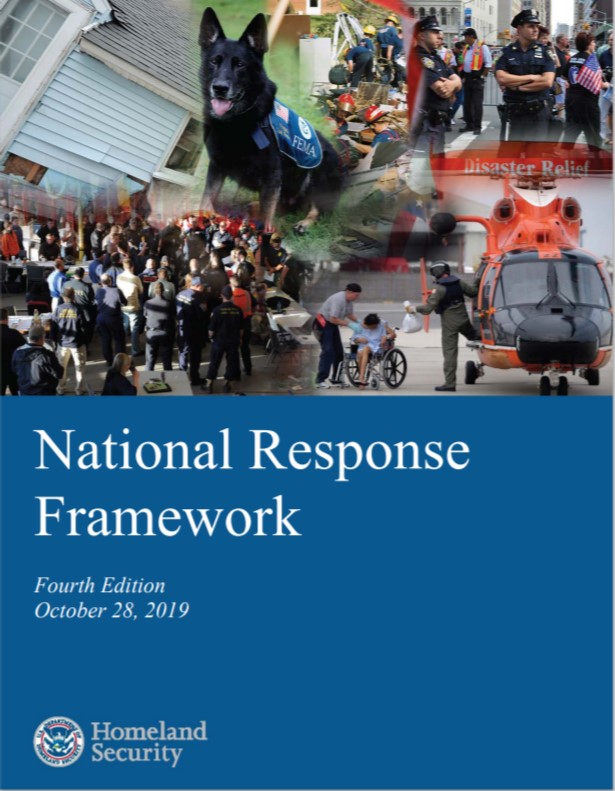![]()
The National Response Framework (NRF) is a guide to how the nation responds to all types of disasters and emergencies. It is built on scalable, flexible, and adaptable concepts identified in the National Incident Management System to align key roles and responsibilities.
The NRF is structured to help jurisdictions, citizens, nongovernmental organizations and businesses:
The National Response Framework includes:
Emergency Support Functions that describe federal coordinating structures that group resources and capabilities into functional areas most frequently needed in a national response.
Support Annexes that describe how support is organized among private sector, non-government organizations and federal partners.
 National Response Framework - Thumbnail" width="615" height="791" />
National Response Framework - Thumbnail" width="615" height="791" />
![]()
![]()
FEMA introduced community lifelines in the fourth edition of the National Response Framework. The community lifelines increase our disaster response capabilities by identifying where there is a breakdown in service and evaluating immediate and potential impacts.
Emergency Support Functions (ESFs) provide the structure for coordinating Federal interagency support for a Federal response to an incident. They are a way to group functions that provide federal support to states and federal-to-federal support, both for Stafford Act declared disasters and emergencies and for non-Stafford Act incidents.